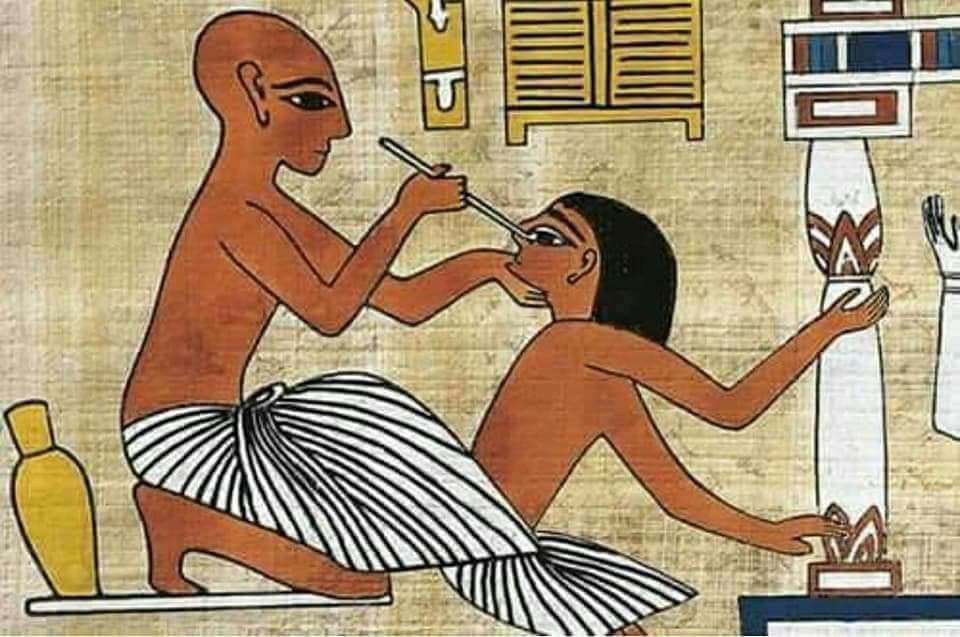Pharaohs set the basics of medicine and they were the ones who established the world’s first universities “Bar Ankh” meaning “House of Life”. Medicine was practiced rationally and every doctor was working in his specialty.
Regarding this matter, Egyptian archaeologist Zahi Hawass commented “During and after the pharaohs’ era, Egyptian doctor enjoyed a prestigious status and was treated respectfully.”

Hawass added that doctors, throughout the pharaoh’s era, were pided into four areas of specialization: doctor priests, doctors, nurses, and veterinarians.
Doctor priests were knowledgeable and experienced. They considered themselves mediators between patient and the healer god. Their knowledge combined religious texts, rituals, and drugs.

The second category, doctors, was named “sno” a terminology that differentiates between humans’ doctors and veterinarians in texts. About this classification Herodotus said “For every illness there was a specialized doctor. There were ophthalmologists, dentists, some were specialized in head diseases, others in intestines diseases, in addition to some rare diseases.
Third class included nurses and specialists in ligaments and massaging. This category was named “Awt” meaning “responsible of ligaments”. Some were curing live persons, others worked in embalming.
Veterinarians represented the last pision. Some medical papyruses were found in El Lahun, near Fayium, meant for curing eyes and teeth of dogs and calves.
Amongst entities, doctors were distributed. Some worked at the Pharaoh’s palace, others at public institutions and others at army barracks.

Doctor who worked at the palace was devoted to treat the Pharaoh and his family. No doubt the pharaoh’s doctor was the most famous and the most skilled amongst the doctors. He was even classified as a scientist.
Imhotep was one of the most famous pharaoh doctors. His name means “who came in peace”. He is considered the most famous in the ancient ages. Imohotep was also Djoser’s architect who constructed Djoser’s stepped pyramid in Saqqara. Aside from being an architect and a doctor, he was also the astronomers’ senior. His fame lasted from 2500 B.C. till 550 A.C.
Afterwards, throughout different ages, some medical figures appeared, such as Herophilos and Erasistratus.
Herophilos showed up in the Hellenistic era (Greek era). He was the most prominent medical scientist in Alexandria. Herophilos was an anatomy scientist who had researches about brain, nerves, kidney, lungs, and genitals.
Erasistratus was a scientist specialized in organs’ functions. His researches about heart and brain functions were more successful than others. Erasistratus managed to differentiate between the nerves’ types in the human body.
Around 280 B.C. Philinus established a new medical school called “The Empiric School” in Alexandria. Philinus, who was one of Herophilos’s pupils, believed that medicine is only to cure illness without specifying the reasons behind.
Medical professionals continued their activities in Alexandria that conserved its prestigious fame, at least until the ends of the fourth century AD when Ammianus Marcellinus commented that for a doctor it was enough to mention he studied in Alexandria to show that he was skilled. Worth noting is that people from different parts worldwide headed to Alexandria to study medicine.
In the third century AD, circumstances were not suitable for scientific researches and medical discoveries ended. Scientists only cared about hoarding information to balance between past achievements and the needs of that time. Thus medicine started to decline. The public resorted to superstitions to treat diseases! On the other side, intellectuals followed the principal” healing the body is the result of soul’s happiness”.













